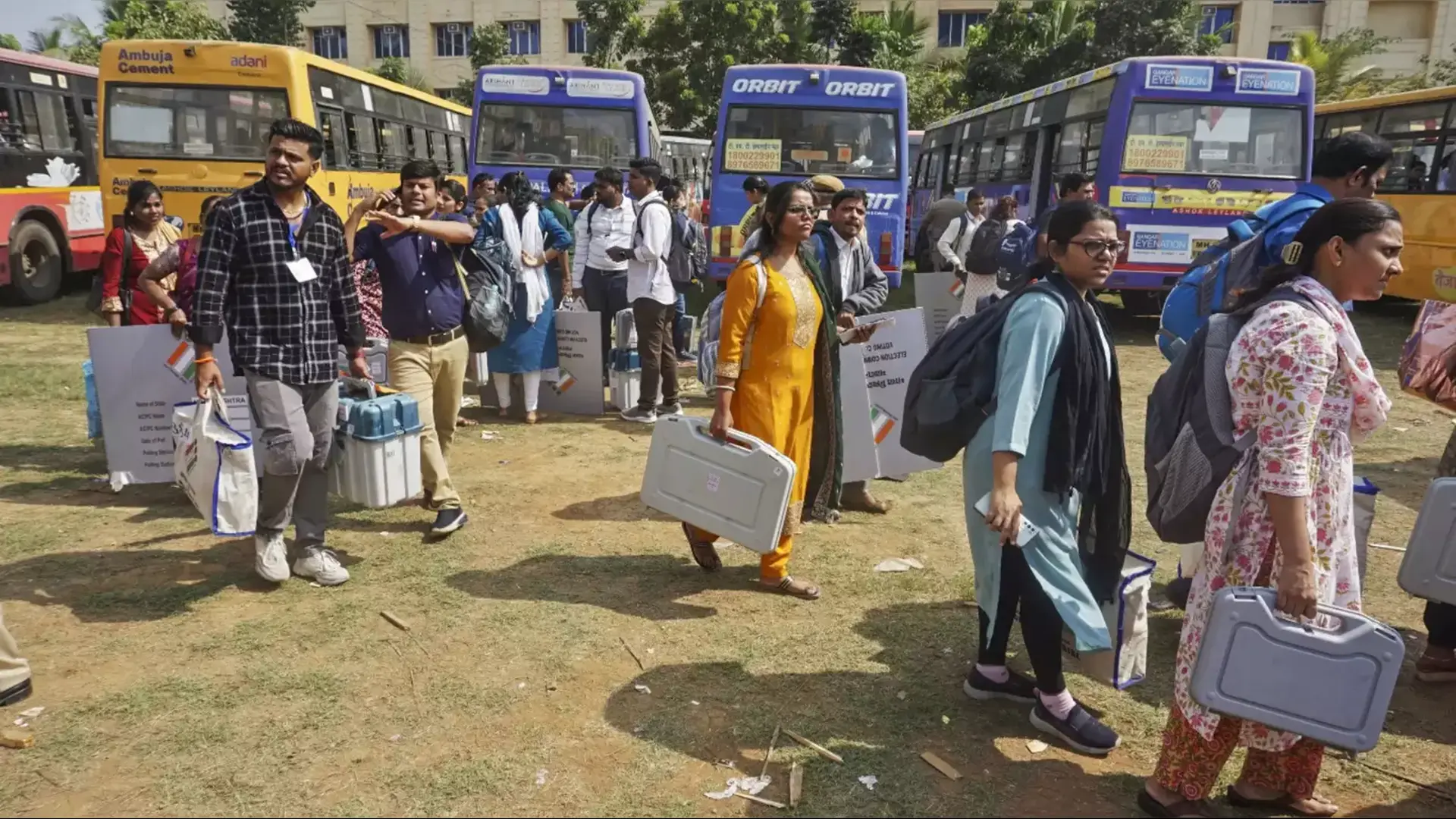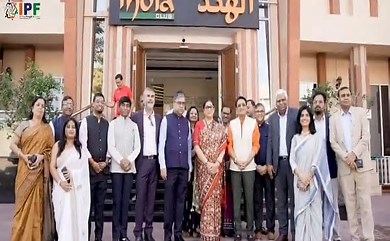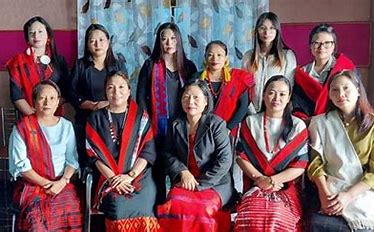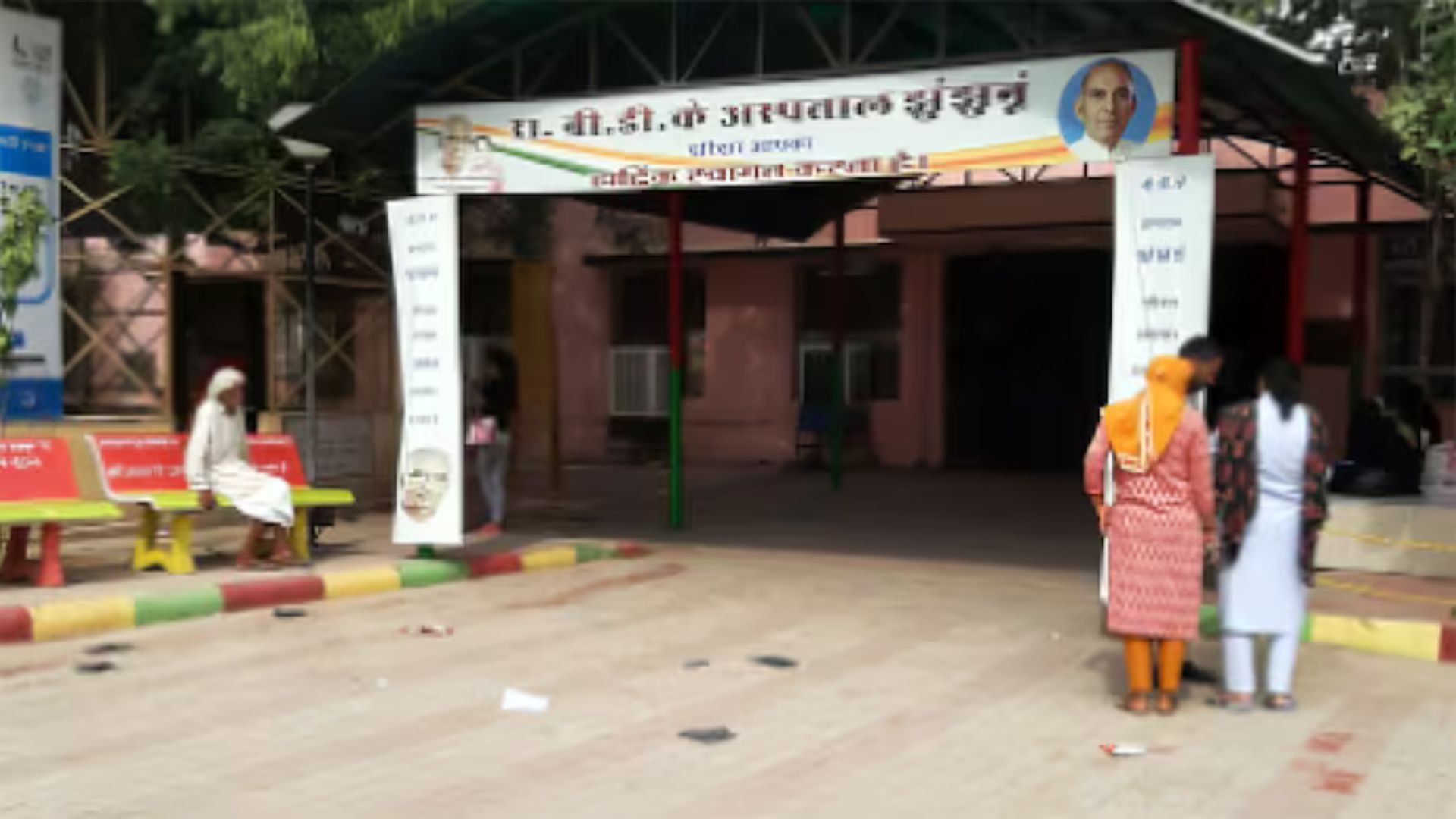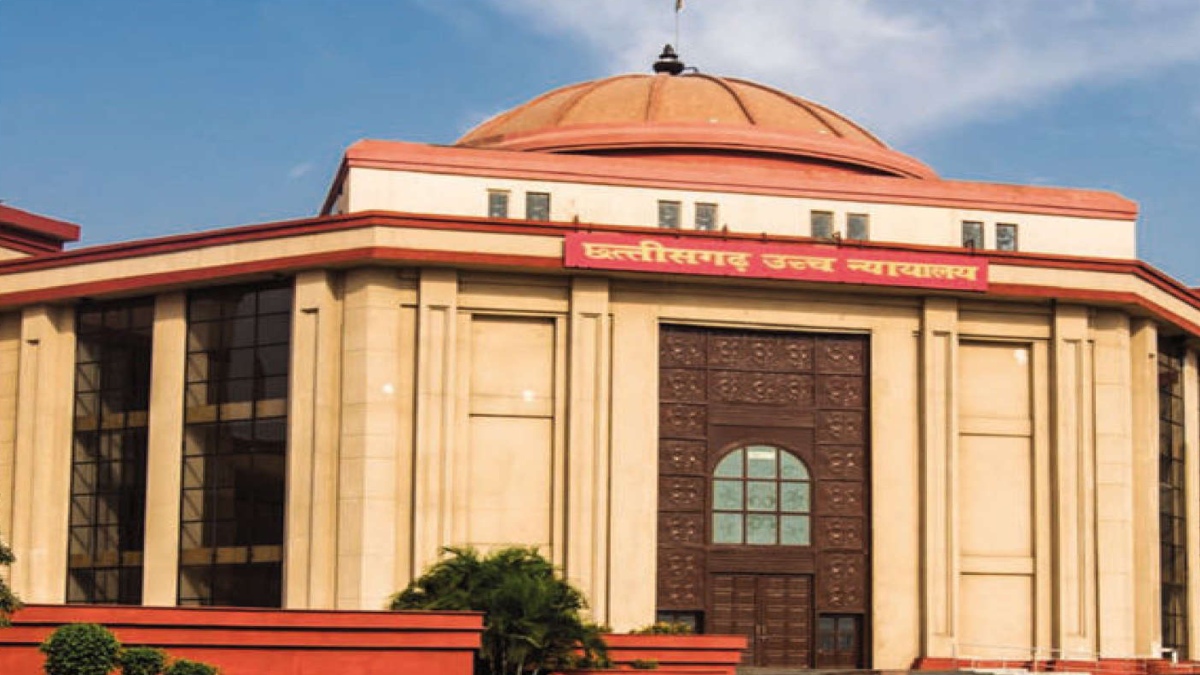
In a significant development which shall greatly impact women, the Chhattisgrah High Court has just recently on June 28, 2021 in a learned, latest and landmark judgment titled Loknath v Shribachahh Kumar Bhoi & Ors in Second Appeal No. 356 of 2001 held quite clearly that the effect of a valid remarriage is that the widow loses her right in the property inherited from her previous husband and that the same cannot be said to be established unless strictly proved under the statutory requirements. It must be also apprised here that a Single Judge Bench of Justice Sanjay K Agrawal has observed quite categorically that, “The effect of the valid remarriage is the widow losing her right in the property inherited from the previous husband. Therefore, when remarriage is set up as a defence, it has to be strictly proved looking to devastating consequence to be befallen upon widow in shape of depriving her right to property.” This significant development culminated in a second appeal concerning a suit property wherein one Ghasi (one of the sons) had died in the year 1942 leaving behind a widowed wife and a daughter. According to the plaintiff, since the widowed wife had entered into second marriage in 1954-55, she ceases to have any interest in the suit property as she did not become the full owner of the suit property by virtue of Section 14(1) of the Hindu Succession Act, 1956.
To start with, Justice Sanjay K Agrawal of Chhattisgrah High Court sets the ball rolling by first and foremost observing in para 1 that, “This second appeal preferred by the original plaintiff / legal representatives of the plaintiff / appellants herein was admitted for hearing on 4-11-2015 by formulating the following three substantial questions of law: –
“1. Whether the learned lower appellate Court was justified in law in reversing the decree passed by the trial Court by recording a finding of partition prior to death of Ghashiram in 1942 in the absence of there being any issue framed?
2. Whether the learned appellate Court was justified in law in holding partition amongst Mohan Abhiram Goverdhan and Jeeverdhan in the absence of legally admissible evidence in that regard?
3. Whether the plaintiff is entitled to declaration that after death of Ghashiram in 1942, defendant Kiyabai and Sindhu were not entitled to any share in the joint family property of Mohan Ghashiram, Goverdhan and Jeeverdhan?”
(For the sake of convenience, parties would be referred hereinafter as per their status shown and ranking given in the suit before the trial Court.).”
While mentioning about the suit property, the Bench then elucidates in para 3 stating that, “The suit property was originally held by Sugriv, he had four sons namely, Mohan, Abhiram, Goverdhan and Jeeverdhan. Mohan died issue-less, whereas Goverdhan had one son Loknath who is the plaintiff herein and Ghasi, son of Abhiram, died in the year 1942. Defendants No.1 and 2 are wife and daughter, respectively, of Ghasi. Defendant No.1 died during the pendency of civil suit, whereas defendants No.3 to 6 are sons and daughter of Jeeverdhan. The dispute relates to the share of Ghasi who died in the year 1942.”
For the sake of clarity, it must be mentioned her that defendant No. 1 is Kiya who is wife of Ghasi (dead) and defendant No. 2 is Sindhu (daughter) of Ghasi (dead).
While elaborating on the plaintiff’s version, the Bench then mentions in para 4 that, “It is the case of the plaintiff that since Ghasi died in the year 1942 and his wife defendant No.1 entered into second marriage in the year 1954-55 in chudi form, therefore, she ceases to have any interest in the suit property and would be governed by clause 29 of the Raigarh State Wajib-ul-arz and as such, she did not become the full owner of the suit property being not in possession of the property held by Ghasi by virtue of Section 14(1) of the Hindu Succession Act, 1956. Therefore, defendants No. 1 & 2 have no right and title over the suit property situated at Village Chichor Umariya in Account Nos.276 & 277 and as such, defendants No. 1 & 2 be restrained from interfering with the possession of the plaintiff and the plaintiff be declared to be the title holder.”
While then elaborating on the version of defendant No. 1 and 2, the Bench then notes in para 5 that, “Defendants No.1 & 2 have filed their joint written statement and opposed the averments made in the plaint stating inter alia that after death of Ghasi, defendants No.1 & 2 have succeeded the property and are in continuing possession of the same. They have further pleaded that the order of the Tahsildar dated 28-5-1984 entering their names in the revenue record is in accordance with law and there is no illegality in the said order. Defendant No.1 has never entered into any second marriage and as such, the civil suit deserves to be dismissed.”
To put things in perspective, the Bench then observes in para 6 that, “The trial Court after appreciating oral and documentary evidence available on record partly decreed the suit holding that clause 29 of the Raigarh State Wajib-ul-arz applies in the present case and defendant No.1 had already entered into second marriage in 1954-55 and as such, she would only be entitled for 5 khandi of land for maintenance. In the appeal preferred by defendant No.2 questioning the judgment & decree of the trial Court, the first appellate Court allowed the appeal of defendant No.2 and held that in the light of Section 14(1) of the Hindu Succession Act, 1956, Kiya Bai – defendant No.1, had become full owner of the suit property on coming into force of the Hindu Succession Act, 1956 and therefore the plaintiff is not entitled for any decree and set aside the judgment & decree of the trial Court, feeling aggrieved against which this second appeal has been preferred by the plaintiff in which substantial questions of law have been formulated which have been set-out in the opening paragraph of this judgment for the sake of completeness.”
While elaborating more after hearing both the sides, the Bench then while going into the nitty-gritty observes in para 10 that, “The suit property was originally held by Sugriv, as noticed hereinabove, he had four sons namely, Mohan, Abhiram, Goverdhan and Jeeverdhan. Mohan died issue-less. Abhiram had one son Ghasi, who died in the year 1942, whose wife and daughter are defendants No.1 and 2, respectively. Defendant No.1 Kiya Bai died during the pendency of civil suit. Goverdhan had one son namely, Loknath, who is the plaintiff herein. Defendants No.3 to 6 are sons and daughter of Jeeverdhan. The dispute relates to the share of Ghasi who died admittedly, in the year 1942. It is the case of the plaintiff that since the suit property was undivided amongst Mohan, Abhiram, Goverdhan & Jeeverdhan and since Ghasi died in the year 1942, defendants No.1 & 2 would get no share in the property being governed by clause 29 of the Raigarh State Wajib-ul-arz, as such, defendants No.1 & 2 had no right except the right of maintenance in terms of the 5 khandi of land which has been given to defendant No.2, therefore, decree for declaration of title declaring the mutation order dated 28-5-1984 in favour of defendants No.1 & 2 and for restraining them from interfering with the possession shown in the suit property – Account Nos.276 & 277 be passed. It was also pleaded that defendant No.1 – wife of Ghasiram, lived in Village Chichor Umariya till 1954-55, but immediately after the marriage of her daughter defendant No.2, she married some one else in chudi form and left the village and as such, she will not get any share in the suit property.”
Needless to state, the Bench then makes it known in para 11 that, “Defendants No.1 & 2 filed their separate written statement jointly stating inter alia that defendant No.1 after the death of Ghasi in the year 1942, remained in the village and stayed in the house left by Ghasi and she never remarried, though she left the village for some time, but she never remarried and since partition has already took place in the lifetime of Ghasi, S/o Abhiram, therefore, after death of Ghasi, defendants No.1 & 2 remained in possession of the suit property by cultivating the suit land and the name of defendant No.1 has also been recorded in the revenue records vide order dated 28-5- 1984 in few rounds of revenue proceeding, as such, the plaintiff is not entitled to get the order of mutation annulled and for permanent injunction.”
As it turned out, the Bench then discloses in para 12 that, “The trial Court held that since defendant No.1 remarried in chudi form in 1954-55 and defendants No.1 & 2 were not in possession of the suit property and the suit property was the joint family property, therefore, clause 29 of the Raigarh State Wajib-ul-arz would prevail and defendants No.1 & 2 are not entitled for any share in the property which the first appellate Court reversed holding that during the lifetime of Ghasi and during the lifetime of his father Abhiram, the suit property was partitioned and defendant No.1 remained in possession of the suit property after the death of her Ghasiram – her husband and father of defendant No.2, and after coming into force of the Hindu Succession Act, 1956 with effect from 17-6-1956, defendant No.1 became the full owner and as such, the plaintiff is not entitled for any decree and accordingly, allowed the appeal and set aside the judgment and decree of the trial Court. Though the plaintiff pleaded that during the lifetime of Ghasi / his father, the suit property has not been partitioned, but the first appellate Court on the basis of appreciation of oral and documentary evidence on record has clearly reached to the conclusion that the property was partitioned and on partition, the suit property fell in the share of Ghasi and after his death, on behalf of defendants No.1 & 2, plaintiff Loknath was in cultivating possession over the suit land.”
To be sure, the Bench then points out in para 13 that, “Plaintiff Loknath (PW-1) in his cross-examination para 8 has clearly admitted that he used to cultivate the land and in lieu of cultivation, the crop is given to defendants No.1 & 2 and once the revenue litigation started, he stopped giving crop. Likewise, Janardan (PW-2) has stated that Goverdhan, who is plaintiff’s father, used to cultivate the land on behalf of defendants No.1 & 2 and the crop is being given in lieu of cultivation.”
On similar lines, the Bench then adds in para 14 that, “Similarly, defendant No.2 Sindhu (DW-2) in her examination-in-chief has clearly admitted that after the death of her father, for two years, her mother cultivated the suit land and thereafter, Goverdhan – father of the plaintiff, started cultivation and used to give crop in lieu of cultivation of the suit land. Even on the suggestion made on behalf of the plaintiff, defendant No.2 maintained that for 2-3 years her mother cultivated the suit land. Even the other witness Aanandram (DW-2) has also stated that after the death of Ghasi, on behalf of defendant No.1 being widow, Goverdhan – father of the plaintiff, used to cultivate the land and give the share of her crop in lieu of cultivation.”
To state the obvious, the Bench then points out in para 15 that, “As such, there is overwhelming evidence available on record to hold that after death of Ghasi , defendant No.1 cultivated the land for some time and thereafter, on her behalf, the plaintiff’s father started cultivating and used to give share of crop in lieu of cultivation of her land. Therefore, it is established position on record that the suit land fell in the share of Ghasi after partition during the lifetime of Ghasi and after death of Ghasi defendant No.1 came in possession of the suit land and on her behalf, the plaintiff’s father was cultivating the land and giving the share of crop to defendant No.1. It is also established position on record that defendant No.1 remained in possession of the suit land till her death i.e. during the pendency of civil suit, as her name was deleted by order dated 9-5-2000. Therefore, the fact remains that defendant No.1 remained in physical position of the suit land even after coming into force of the Hindu Succession Act, 1956 and her limited right, if any, has ripened into absolute title by virtue of Section 14(1) of the Hindu Succession Act, 1956 (for short, ‘the Act of 1956’).”
Simply put, the Bench then states the ostensible in para 16 that, “At this stage, it would be appropriate to notice Section 14(1) of the Act of 1956 which states as under: –
“14. Property of a female Hindu to be her absolute property.— (1) Any property possessed by a female Hindu, whether acquired before or after the commencement of this Act, shall be held by her as full owner thereof and not as a limited owner.
Explanation.— In this sub-section, “property” includes both movable and immovable property acquired by a female Hindu by inheritance or devise, or at a partition, or in lieu of maintenance or arrears of maintenance, or by gift from any person, whether a relative or not, before, at or after her marriage, or by her own skill or exertion, or by purchase or by prescription, or in any other manner whatsoever, and also any such property held by her as stridhana immediately before the commencement of this Act.””
Quite rightly, the Bench then mentions in para 17 that, “On a careful perusal of the aforesaid provision, it is quite vivid that under Section 14(1) of the Act of 1956, to get attracted, the property must be possessed by the female Hindu on coming into force of the Act of 1956. The object of this provision is firstly, to remove the disability of a female to acquire and hold property as an absolute owner and secondly, to convert any estate already held by woman on the date of commencement of the Act as a limited owner, into an absolute estate.”
In a similar vein, the Bench then further adds in para 18 that, “In Mayne on Hindu Law, 15th Edn., page 1171, qua Section 14(1) of the Act of 1956, it is stated as under: —
“on a reading of sub-section (1) with Explanation, it is clear that wherever the property was possessed by a female Hindu as a limited estate, it would become on and from the date of commencement of the Act her absolute property. However, if she acquires property after the Act with a restricted estate, sub-section (2) applies. Such acquisition may be under the terms of a gift, will or other instrument or a decree or order or award.””
While quoting the relevant judgments, the Bench then specifies in para 19 that, “Their Lordships of the Supreme Court in the matter of Gummalapura Taggina Matada Kotturuswami v. Setra Veeravva and others (1970) 1 SCC 786 while considering the meaning of “any property possessed by a female Hindu” quoted with approval the following words of Justice P.N. Mookherjee in the matter of Gostha Behari v. Haridas Samanta AIR 1959 Cal 557 (at page 559): “The opening words in “property possessed by a female Hindu” obviously mean that to come within the purview of the section the property must be in possession of the female concerned at the date of the commencement of the Act. They clearly contemplate the female’s possession when the Act came into force. That possession might have been either actual or constructive or in any form recognised by law, but unless the female Hindu, whose limited estate in the disputed property is claimed to have been transformed into absolute estate under this particular section, was at least in such possession, taking the word “possession” in its widest connotation, when the Act came into force, the section would not apply.”
and Their Lordships held :
“In our opinion, the view expressed above is the correct view as to how the words “any property possessed by a female Hindu” should be interpreted.””
Furthermore, the Bench then adds in para 20 that, “In Eramma (supra), the Supreme Court held that the property possessed by a female Hindu as contemplated in the Section is clearly the property to which she has acquired some kind of title whether before or after the commencement of the Act and negatived a claim under Section 14(1) of the Act in view of the fact that the female Hindu possessed the property on the date of the Act by way of a trespass after she had validly gifted away the property, and further held that the need for possession with a semblance of right as on the date of the coming into force of the Hindu Succession Act was thus emphasized.”
Quite clearly, the Bench then points out in para 21 that, “In the matter of Dindayal and another v. Rajaram AIR 1970 SC 1019, it was held that before any property can be said to be “possessed” by a Hindu woman as provided in Section 14(1) of the Hindu Succession Act, two things are necessary (a) she must have a right to the possession of that property, and (b) she must have been in possession of that property either actually or constructively.”
While citing another relevant case law, the Bench then hastens to add in para 22 that, “Thereafter, in the matter of V. Tulasamma and others v. Sesha Reddy (Dead) by LRs. (1977) 3 SCC 99, their Lordships considered the real nature of incidence of Hindu widow’s right of maintenance and scope and ambit of Section 14(1) of the Act of 1956 and held as under: –
“The words “possessed by” used by the Legislature in Section 14(1) are of the widest possible amplitude and include the State of owning a property even though the owner is not in actual or physical possession of the same. Thus, where a widow gets a share in the property under a preliminary decree before or at the time when the 1956 Act had been passed but had not been given actual possession under a final decree the property would be deemed to be possessed by her and by force of Section 14(1) she would get absolute interest in the property. It is equally well settled that the possession of the widow, however, must be under some vestige of a claim, right or title, because the section does not contemplate the possession of any rank trespasser without any right or title.””
Going ahead, the Bench then points out in para 23 that, “In the matter of Sadhu Singh v. Gurdwara Sahib Narike and others AIR 2006 SC 3282 , the Supreme Court pointed out the essential ingredients in determining whether sub-section (1) of Section 14 of the Act of 1956 would come into play and held that the antecedents of the property, the possession of the property as on the date of the Act and the existence of a right in the female over it, however limited it may be, are the essential ingredients in determining whether sub-section (1) of Section 14 of the Act of 1956 would come into play. It was further held that if she takes it as an heir under the Act, she takes it absolutely.”
On similar lines, the Bench then recalls in para 24 that, “Similar proposition has been laid down by the Supreme Court in the matter of Sri Ramakrishna Mutt represented by Manager v. M. Maheswaran and others (2011) 1 SCC 68 reiterating and reaffirming the principles of law laid down in Gummalapura Taggina Matada Kotturuswami (supra).”
Moving on, while citing a relevant case law, the Bench then mentions in para 25 that, “In the matter of Shyam Narayan Singh and others v. Rama Kant Singh and others 2018(1) RCR (Civil) 981 : 2017 SCC OnLine SC 1985, the Supreme Court while considering the provision contained in Section 14(1) of the Act of 1956 held as under: –
“5. On an analysis of Section 14(1) of the Hindu Succession Act of 1956, it is evident that the Legislature has abolished the concept of limited ownership in respect of a Hindu female and has enacted that any property possessed by her would thereafter be held by her as a full owner. Section 14(1) would come into operation if the property at the point of time when she has an occasion to claim or assert a title thereto. Or, in other words, at the point of time when her right to the said property is called into question.
Please read concluding on thedailyguardian.com
The legal effect of Section 14(1) would be that after the coming into operation of the Act there would be no property in respect of which it could be contended by anyone that a Hindu female is only a limited owner and not a full owner. (We are for the moment not concerned with the fact that Sub-section (2) of Section 14 which provides that Section 14(1) will not prevent creating a restricted estate in favour of a Hindu female either by gift or will or any instrument or decree of a Civil Court or award provided the very document creating title unto her confers a restricted estate on her). There is nothing in Section 14 which supports the proposition that a Hindu female should be in actual physical possession or in constructive possession of any property on the date of the coming into operation of the Act. The expression ‘possessed’ has been used in the sense of having a right to the property or control over the property. The expression ‘any property possessed by a Hindu female whether acquired before or after the commencement of the Act’ on an analysis yields to the following interpretation:
(1) Any property possessed by a Hindu female acquired before the commencement of the Act will be held by her as a full owner thereof and not as a limited owner.
(2) Any property possessed by a Hindu female acquired after the commencement of the Act will be held as a full owner thereof and not as a limited owner.””
In the context of this present case, the Bench then waxes eloquent to state in para 26 that, “Reverting to the facts of the present case in the light of the aforesaid proposition of law laid down by their Lordships of the Supreme Court in the above-stated judgments (supra), admittedly, Ghasi died in the year 1942 by which his widow Kiya Bai – defendant No.1 became the limited owner of his share by virtue of the provisions contained in Section 3(2) of the Hindu Women’s Rights to Property Act, 1937 and after coming into force of the Act of 1956 and by operation of Section 14(1) of the Act of 1956 with effect from 17-6-1956, her limited right in the suit property would blossom into absolute estate as contemplated by Section 14(1) of the Act of 1956 and she would become absolute owner of the suit property as on date.”
Quite forthrightly, the Bench then points out in para 28 that, “Since in this case, defendant No.1 had already became limited owner before the coming into force of the Act of 1956 and thereafter, her limited right has became ripened into absolute right, clause 29 of the Raigarh State Wajib-ul-arz would not be applicable, as such, the arguments based on this point, is rejected.”
Adding more to it, the Bench then observes in para 29 that, “Now, one more objection is that since defendant No.1 Kiya Bai had already entered into marriage with some one else in 1954-55 after marriage of her daughter, therefore, she had lost her right over the property deserves to be noticed. In para 5 of the plaint, it has simply been stated that defendant No.1 – widow of Ghasi, remained at Village Chichor Umariya till 1954-55, but after marriage of her daughter – defendant No.2, she left the village after marrying some one else in chudi form, which defendants No.1 & 2 have clearly and specifically denied.”
It is worth noting that the Bench then makes it a point to mention specifically in para 30 that, “At this stage, it would be appropriate to notice Section 2 of the Hindu Widows’ Remarriage Act, 1856 (for short, ‘the Act of 1856’) which states as under: –
“2. Rights of widow in deceased husband’s property to cease on her remarriage.—All rights and interests which any widow may have in her deceased husband’s property by way of maintenance, or by inheritance to her husband or to his lineal successors, or by virtue of any will or testamentary disposition conferring upon her, without express permission to remarry, only a limited interest in such property, with no power of alienating the same, shall upon her remarriage cease and determine as if she had then died; and the next heirs of her deceased husband, or other persons entitled to the property on her death, shall thereupon succeed to the same.””
In addition, the Bench then states in para 31 that, “Section 6 of the Act of 1856 states about ceremonies required for remarriage which is as under: –
“6. Ceremonies constituting valid marriage to have same effect on widows marriage—Whatever words spoken, ceremonies performed or engagements made on the marriage of a Hindu female who has not been previously married, are sufficient to constitute a valid marriage shall have the same effect if spoken, performed or made on the marriage of a Hindu widow; and no marriage shall be declared invalid on the ground that such words, ceremonies or engagements are inapplicable to the case of a widow.””
As a corollary, the Bench then states in para 32 that, “Thus, according to Section 6 of the Act of 1856, in case of remarriage, all the formalities for marriage are required to be proved. Section 6 of the Act contemplates the performance of almost the same ceremonies, which are required in the case of the marriage of Hindu female. In order to prove the remarriage, performance of all the ceremonies will have to be done in her remarriage. There can be no valid marriage in any form without a substantial performance of the requisite religious ceremonies. The performance of ceremonies, therefore, is necessary for the completion of the marriage. The effect of the valid remarriage is the widow losing her right in the property inherited from the previous husband. Therefore, where remarriage is set up as defence, it has to be strictly proved looking to devastating consequence to be befallen upon widow in shape of depriving her right to property.”
Quite significantly, the Bench then observes in para 33 that, “Reverting to the facts of the present case, finally, in the light of the aforesaid proposition, it would be apparent that in order to prove the fact of remarriage, the plaintiff (PW-1) in his statement in para 1 has simply stated that after marriage of defendant No.2, defendant No.1 has remarried some one else and left the village and in para 6 of his cross-examination, he was not able to even tell the name of person whom defendant No.1 has remarried and he has also clearly stated that he had not seen defendant No.1 remarrying in chudi form and even failed to state the date and year when Kiya Bai – defendant No.1 remarried in chudi form. Janardan (PW-2) has stated that defendant No.1 absconded with one Gumpatiya Baba, but in cross-examination he has failed to state particulars about the marriage and failed to state about the marriage of defendant No.1 with that person (Baba). Likewise, Khaju (PW-3), who is a hearsay witness, has clearly stated that he was informed by the villagers that Kiya Bai had remarried someone else and has left the village, but he also failed to clearly state about the particulars of marriage and about the person with whom Kiya Bai is said to have performed second marriage.”
Most significantly, the Bench then while continuing further holds in para 34 that, “As such, there is no adequate pleading with regard to remarriage of Kiya Bai with any person and therefore there is neither pleading of remarriage of Kiya Bai with someone nor there is admissible evidence on record to hold that Kiya Bai had remarried and lost her right to the property, as it has already been held that the effect of remarriage would be, widow loses her right in the property inherited from her husband and unless the fact of remarriage is strictly proved after observing the ceremonies required as per Section 6 of the Act of 1856, the fact of remarriage cannot be said to be established by which the right to property, which is a constitutional right, is lost that too by widow. Therefore, the finding recorded by the first appellate Court that the suit property fell in the share of Ghasi and after death of Ghasi, defendant No.1 remained in physical possession of the suit land and by virtue of Section 3(2) of the Hindu Women’s Rights to Property Act, 1937, defendant No.1 Kiya Bai became the limited owner of the property during her lifetime till the coming into force of the Act of 1956 and after coming into force of the Act of 1956, she became the absolute of the suit property, is correct finding of fact based on the evidence available on record, it is neither perverse nor contrary to the record. I do not find any perversity or illegality in the said finding recorded by the first appellate Court. The substantial questions of law formulated are answered accordingly.”
As a consequence, the Bench then holds in para 35 that, “Resultantly, the first appellate Court is absolutely justified in granting the appeal dismissing the suit filed against the defendants and as such, the second appeal deserves to be and is accordingly dismissed leaving the parties to bear their own cost(s).”
Finally, the Bench then holds in para 36 that, “Decree be drawn-up accordingly.”
In essence, the crux of this notable judgment by a Single Judge Bench of the Chhattisgarh High Court is that widow certainly loses her right in property inherited from previous husband on valid remarriage. But a rider has been added here for the benefit of widow that the remarriage must be strictly proved which must be valid also and it cannot be mere gossip only that can deprive her of the right in property inherited from previous husband on remarriage. We have seen how the relevant judgments and relevant points have been forwarded by Justice Sanjay K Agrawal who has authored this leading judgment which we have already discussed hereinabove!
Sanjeev Sirohi, Advocate,


